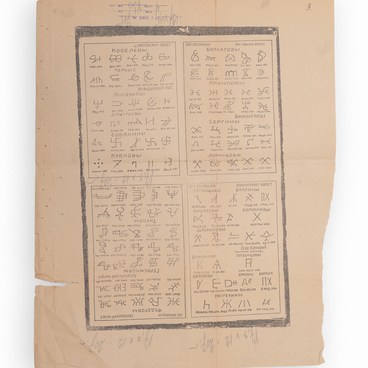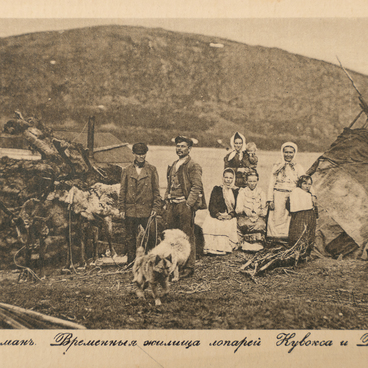Studying the life of the Kola Sami, the academic Dmitry Konstantinovich Solovyov crossed the entire Kola Peninsula as part of the expedition of the Ethnographic Department of the Russian Museum of Emperor Alexander III, which was conducted to study the traditional culture of the Kola Sami. The local people helped him in this endeavor.
Between May and September of 1911, the route of the expedition passed through the entire Kola Peninsula. The expedition resulted in an ethnographic collection of 56 items, including hunting equipment, fishing gear and woodworking tools, and household utensils.
Despite its isolated position from the Great Land, the Kola Peninsula has been at the center of economic interests in various historical periods. The 18th–19th centuries saw the emergence of certain economic conditions for the Kola North, which led to a broadly changing environment.
An additional or accompanying type of economic activity of the indigenous population developed on the territory of the Kola Peninsula — carrier’s trade. Local residents were able to skillfully adapt to the changing situation, as there was an opportunity for additional income, which was no longer associated with the traditional use of natural resources.
In addition to carrier’s trade, Sami had such new options as to service post offices, to rent out hayfields, to protect fishing camps on the shores of the Barents Sea. Collecting firewood became even more essential.
The guests were accompanied along the “Kola Tract”, a road that runs from Pomorie through Lapland to Kola. The Kola Tract was the only way from continental Russia to the north of the Kola Peninsula until the opening of steamship service in 1871.
The local historian Ivan Fyodorovich Ushakov wrote in the “Selected Works”, “In the inner Lapland there was only one regular road — from Kandalaksha to Kola, which had different names: “Yamskoy way” (16th–17th centuries), “Kola trakt” (18th–19th centuries) or simply “Murmansk road“.
According to the ethnographer Nikolay Nikolaevich
Kharuzin, it was “izvoznichestvo” (carrier’s trade) that was one of the most
profitable and popular activities. The Sami acted as guides to the unknown
world, opening hidden paths to arriving guests. Reindeer, which accompanied
cargoes and guests in winter time, helped the Sami in such activity. In summer,
the means of transportation were limited to traveling by boat along the “roads”
and rivers that connected the settlements.


